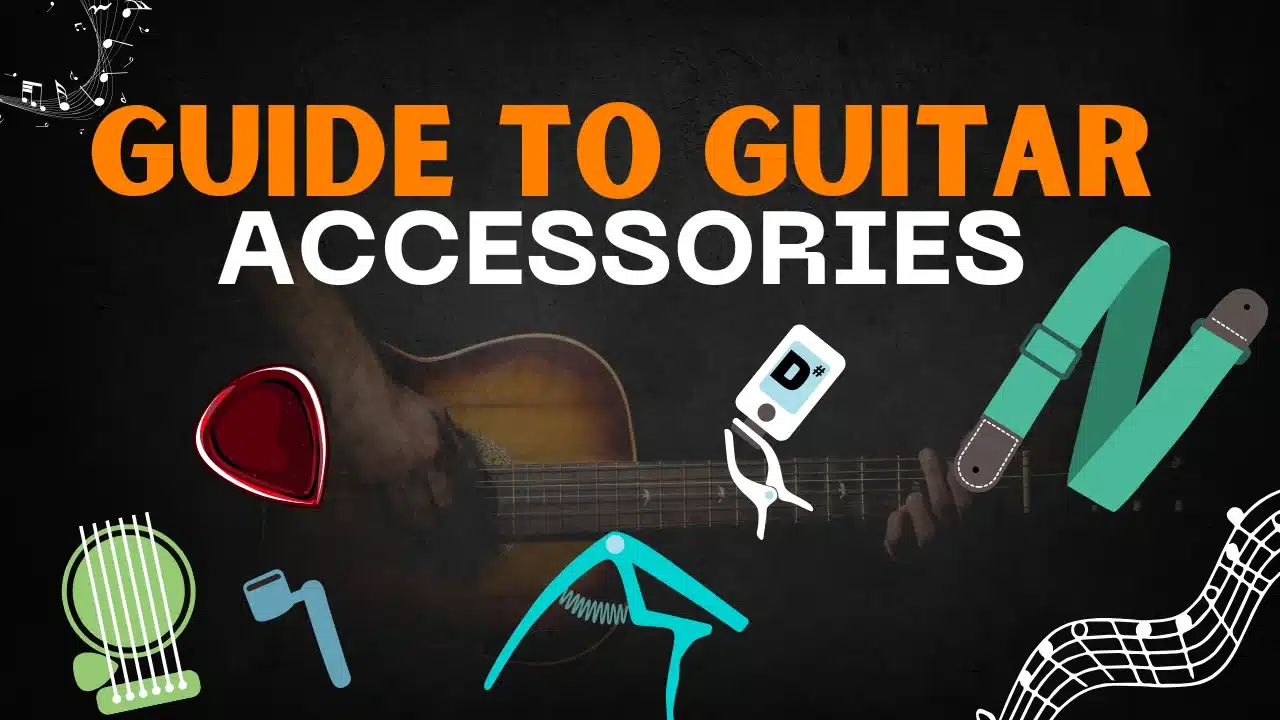Any person who owns a guitar regardless of their skill level require a couple of guitar accessories to assist their guitar playing. Some of these play a vital role and most of these accessories are tools of a guitarist’s trade. Touring musicians or session guitarists own multiple items depending on the environment they play and/or perform. The most common accessories that are advertised online are a tuner and a couple of plectrums (guitar picks). These are also sold along with certain guitar models as part of something called a ‘starter kit’.
But which ones are really important from this guitar accessories list? Which of these accessories are really necessary for someone just starting to learn the guitar? Which ones work with the type of guitar you’re playing and why? In this Guide for guitar accessories, we’re going to look at some of most basic and required accessories for anyone who plays the guitar. Here we have listed down different guitar accessories lists along with it’s images for better understanding.
Guitar Plectrums
Number one from our guitar accessories list is “Guitar pick or plectrum” is generally a small triangular shaped plastic piece held between the pointer/index finger and the thumb. This is used to strike the strings of the guitar. Usually they come in a specific shape and size since it is easier to hold it and keep it from falling or slipping off these picks are great guitar accessories for beginners who starts their guitar journey.
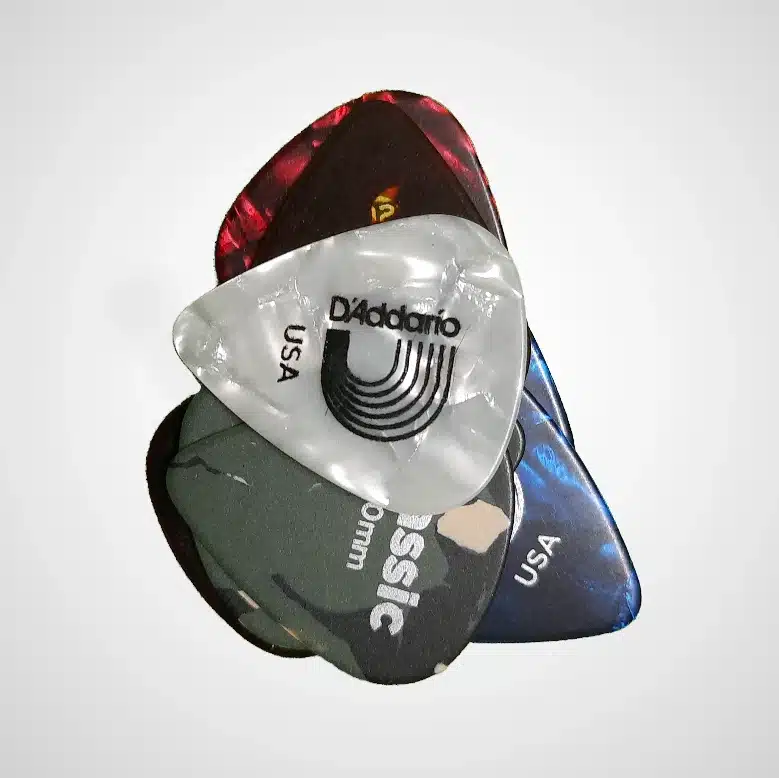
Of course, there are many choices of picks available in the market. They are made of various types of plastic like celluloid, acetal, acrylic resin. Other materials are also used like nylon, carbon fiber, tortoise shells, metals, stones and even certain types of wood.
Guitar picks come in various shapes and sizes and thicknesses ranging from 0.4mm (really thin) to 3mm (very thick). A beginner to intermediate player goes for a regular sized celluloid pick with a thickness varying between 0.5 to 0.7mm. Depending on the genre or the type of guitar, a more advanced player opts for a thicker and smaller sized pick.
Guitar Tuner
No matter who they are, every guitarist needs to keep their guitars in tune. Some pros may get away with a few gimmicks. But most of us are not adept enough to tune a guitar by just listening to how the strings sound. Hence we need a guitar tuner to help tune and check the guitar strings to see if it is in tune. This one of best guitar accessories for beginner to ace your guitar skills.
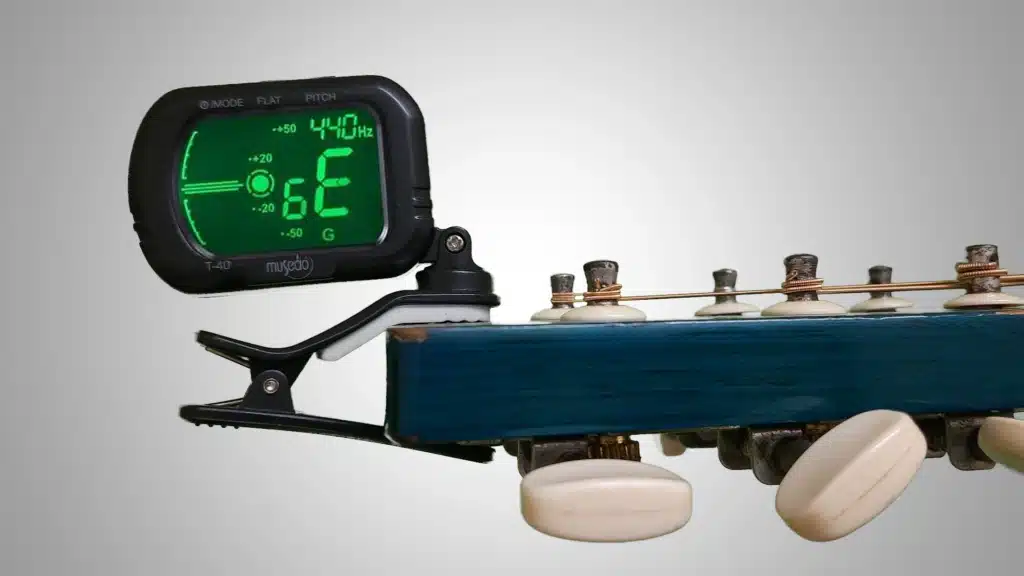
Previously, digital clip-on chromatic tuners that ran on button cell batteries were all the rage. These can be fixed on the head of the guitar (using the clip). Based on the vibrations of the strings, it will show the note of that particular string that was plucked.
The advantage of such tuners was the fact that they were compact and small in size. They can be used to tune any stringed instrument. Digital tuners tend to be quite accurate and fast. It contains a piezo crystal that works over guitar body’s vibrations. It is immune to ambient noise. Since it is chromatic, it can be used to tune the guitar in any tuning of our choice.
The big problem with this type of tuner is the fact that we can’t say what is the right note the string should be tuned to. Also it shows no information on whether the tuning pegs need to be tightened or loosened. This may be a concern for novice players just beginning their guitar journey.
Nowadays, there are a few applications both on computers and smartphones. They use the internal microphone to tell exactly what string was plucked and whether the corresponding tuning peg needs to be turned clockwise or counter-clockwise. This depends on the type of tuning required for the intended purpose. Finding one is yet another challenge. But in the meantime, feel free to experiment with the online chromatic guitar tuner found right here on the musicmaster.in website (under the resources section).
Metronome
This beneficial tool is not only used by guitarists, but also by other musicians as well. A metronome helps to keep the tempo steady for any musician and it is widely used as a practice tool. You can set the tempo (i.e., the speed) depending on the song you want to play and it will constantly play a beat in a continuous loop.
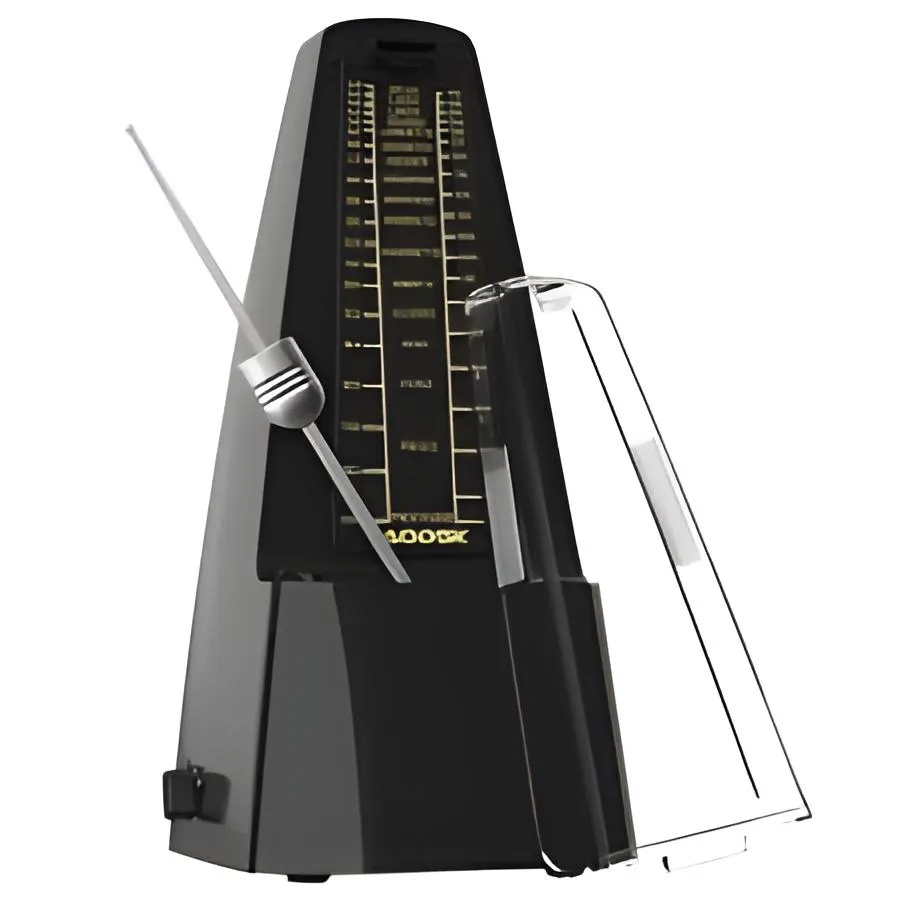
There are various types of metronomes. The conventional metronome works like a wind-up toy, where you can slide the weight on the wand to set the tempo you wish. There’s a crank on the side which has to be turned a couple of times. Now, you can just push the wand to the side, and it should keep moving from side to side as you hear the clicking sounds. A more modern version was electronic with dials and buttons to adjust the tempo and also the pitch/frequency of the beat. Later, digital metronomes started becoming popular, which ran on batteries.
Nowadays, it is so much easier to download metronome apps or just run them on a website within a web browser. Most of these metronomes have a fixed tempo range from 40 to 220 BPMs and usually this range is good enough to practice. There is a good metronome app right here on the musicmaster.in website (under the resources section) ranging from 20 to 280 BPMs which also labels the various tempo with nicknames which makes it easier to track the speed.
Guitar Gig Bag
Another very important accessory to the guitar you play is a guitar bag. It is very helpful when you’re travelling with your guitar or if you want to store it away at times when you’re not playing. Plus the guitar bag keeps it clean from the prevailing dust around you, especially if you are based in a city-like environment.
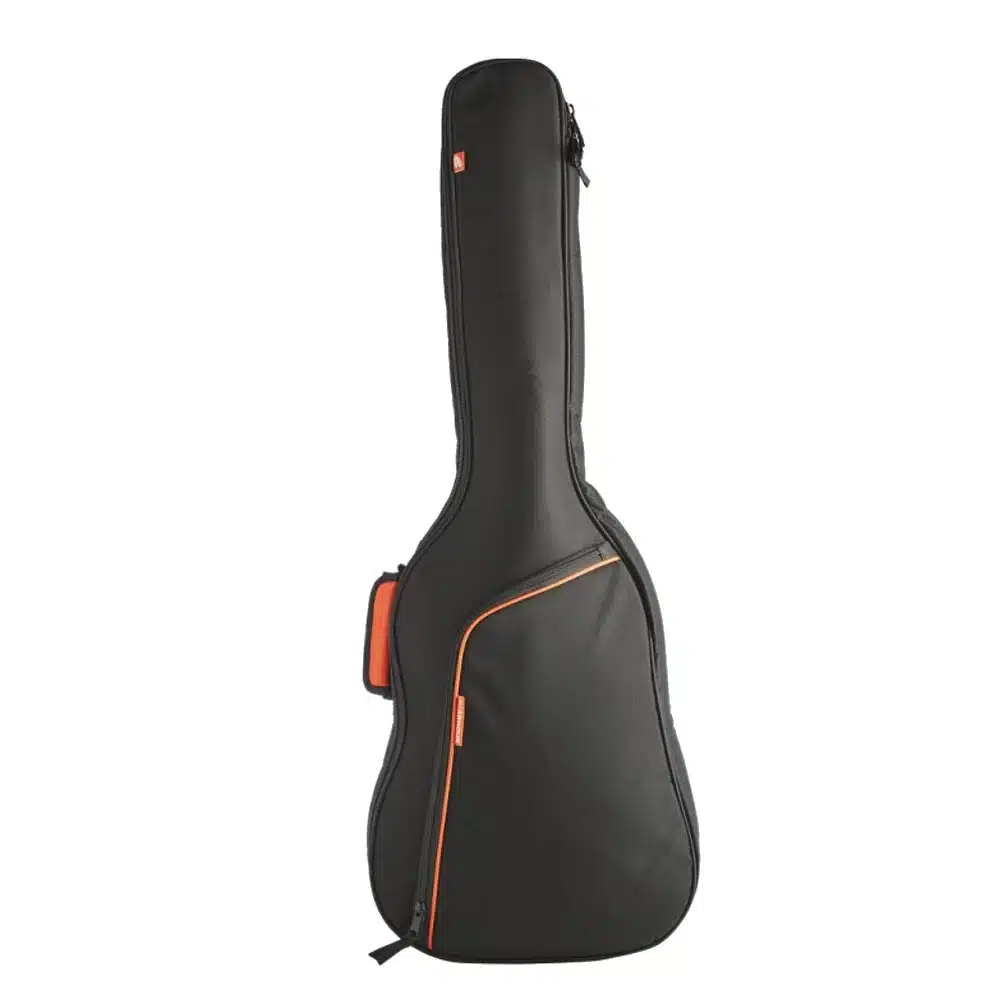
There are various types of guitar bags depending on the material used, the size of the guitar it can accommodate and other fancy features. For instance, some bags have additional zip pockets large enough to keep a book or other guitar accessories like a tuner, capo, extra strings, some picks or even other things like an effects pedal, guitar cables or even foot rests that electric guitar players or classical guitar players may utilize regularly.
Depending on such factors and brand value, the pricing on these bags also differs. Preferably, opt for a bag that is big enough to place your guitar in, and also consider whether it has any type of padding to protect the guitar from an accidental fall or other such damages. If you are more affluent, try going for a proper guitar hard case. Unfortunately, the cost of such cases is usually almost double the value of the guitar it needs to protect. So choose wisely.
Guitar Stands & Guitar Hangers
A guitar stand definitely comes in handy if you have to play in a live gig or jam amongst your band members, especially when you have to put down your instrument when you’re not using it. After you’ve done playing the guitar, you could place it back inside you guitar bag. But instead of that, if you place it in a guitar stand or hang it by placing it on a guitar hanger (nailed to the wall) it will definitely be more aesthetically pleasing and inspire you to keep playing and practicing the guitar.
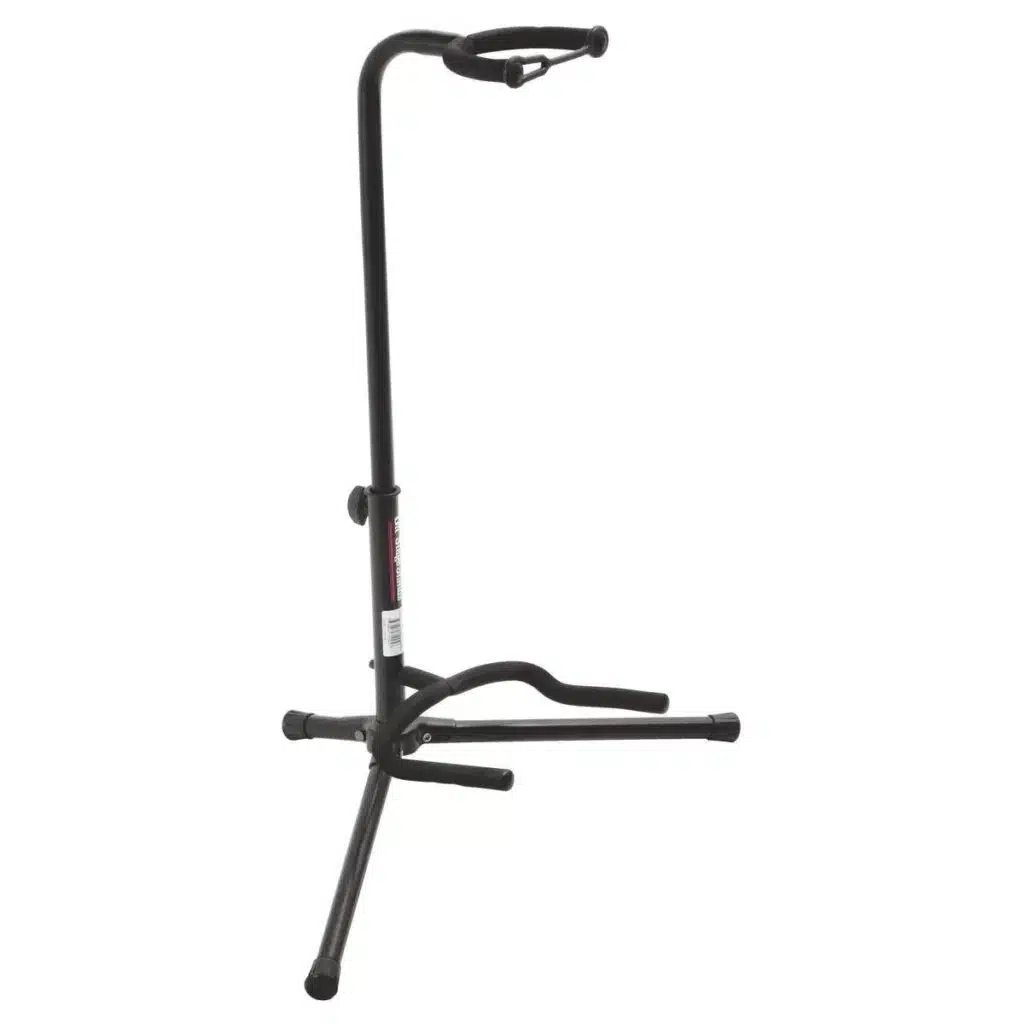
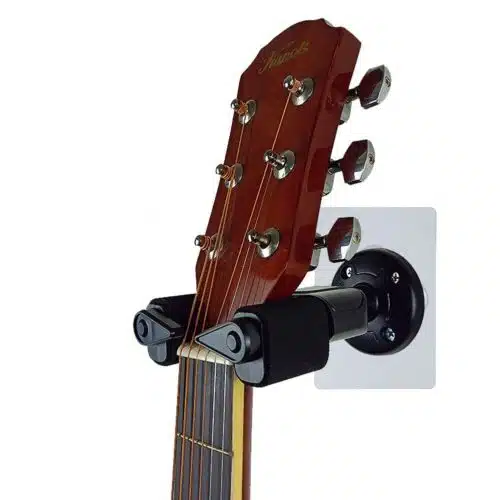
At home or in a studio environment, one can’t always hold on to the guitar all the time. Rather than placing it in the gig bag, a guitar stand makes it a lot easier to place the guitar away temporarily. Besides, both guitar stands and guitar hangers draw attention to your guitar particularly if you own a fancy one. No wonder guitar stores display all their guitars with guitar hangers!
As is the case with any other accessory, both guitar stands and guitar hangers come with a plethora of different functions and features. Most of the modern guitar stands are foldable, light weight and easily portable (you can just slip it into your gig bag and take it with you). Some guitar hangers automatically lock around the guitar neck when placed in it. This is essential to keep the guitar from accidentally falling off to the ground. Ideally choose the ones that are both durable & functional.
Guitar Capo
A conventional guitar capo holds the guitar strings at any one particular fret (like when you hold the guitar strings with the pointer/index finger in barre chords) thereby transposing the pitch of all the strings to higher pitches. A capo helps in playing open chords in different keys (usually in higher pitches) without the use of barre chords. This makes it easier for a guitarist to play chords for songs with sharp or flat keys normally played using barre chords.
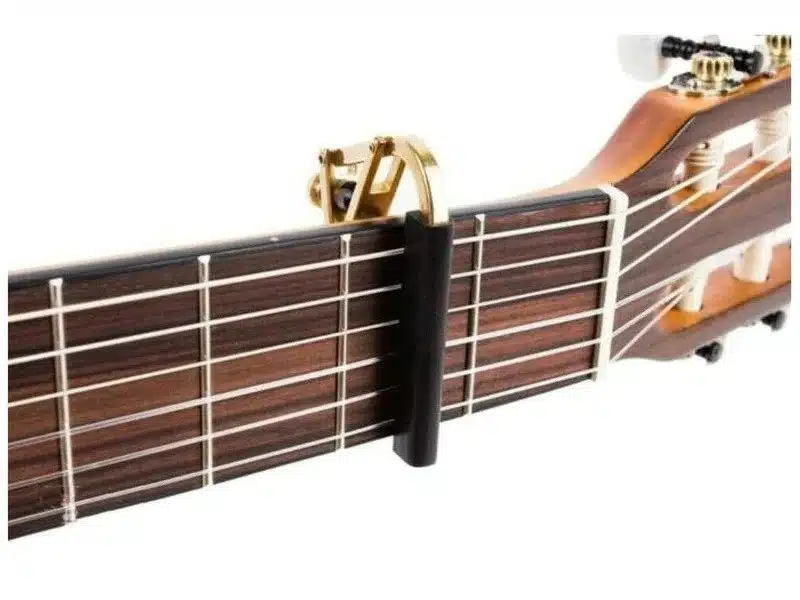
Although using a capo simplifies playing songs not having natural notes, the downside to doing this is that the tension of the guitar strings naturally tightens and the scale length is now naturally smaller (any note that you hold above the capo won’t be heard). This means that access to the lower sounding notes are limited. When you place the capo beyond the 5th fret, any open chord played on the guitar may sound a bit different (almost like playing a ukulele). But it eases the burden of using barre chords and helps in understanding transposed notes and chords.
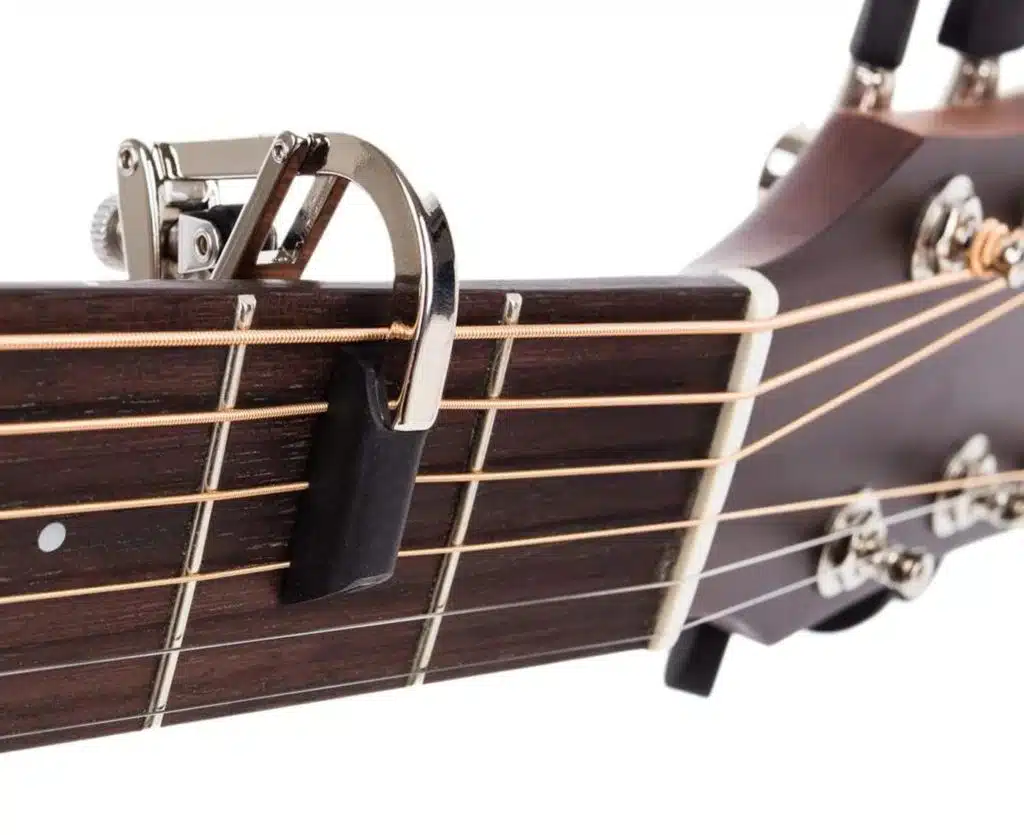
Some capos have the function of holding down just a certain set of strings. These are called partial capos. Using partial capos allows a person to play some of the lower strings open while just holding down the relevant higher strings. If you’re willing to experiment, this can lead to the discovery of many types of open tunings.
The construction, mechanisms (like spring loaded or screw-on) and material used (cloth or metal) for these capos differ along with the pricing. Be sure not to use a capo with extremely high clamping force or it could damage the neck or pop the strings.
Guitar Straps
Well, guitar straps are mostly used by guitar players who are required to stand and play especially in front of an audience. But, you could still benefit from using a guitar strap when you sit and play, since it keeps the guitar from slipping off and helps you maintain a good posture especially when you play for longer periods of time. This is one of a useful guitar accessories for beginners to prevent your guitar from damage.
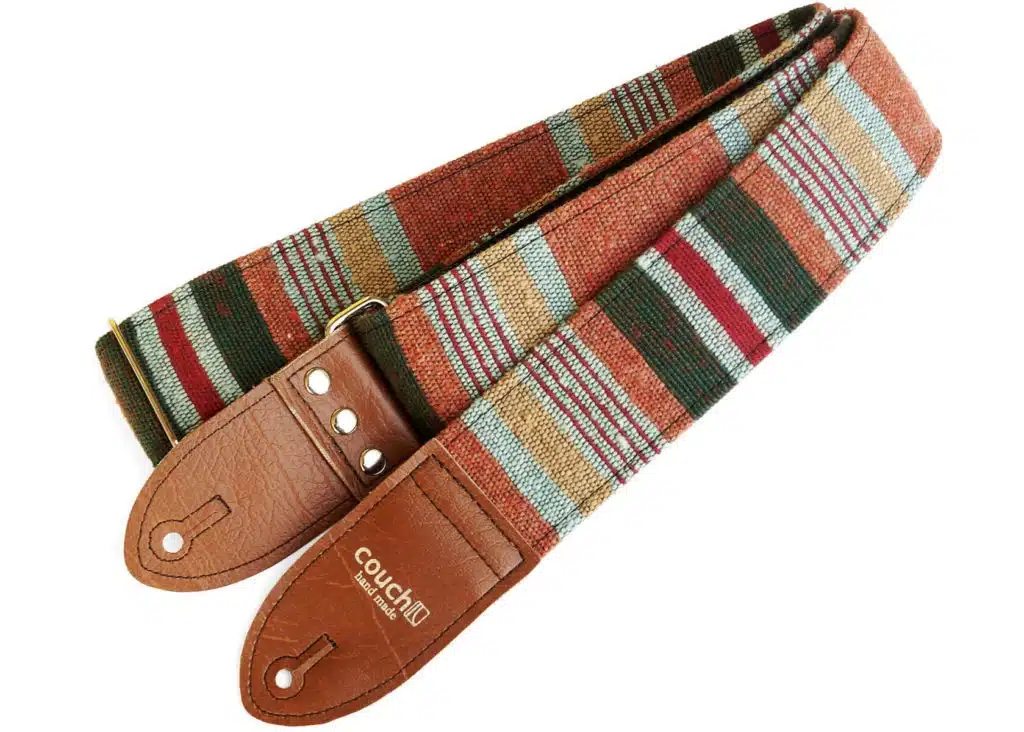
The length of the guitar strap is easily adjustable with the help of the provided buckle. Ideally you should adjust the length of the strap in such a way that your guitar stays roughly at the same position when playing siting down or standing up. The leather straps however, have a different mechanism and are much harder to adjust. But, just like clothing and apparel, guitar straps come in so many different sizes, colours, materials and designs to match your guitar’s design and finish. So spoilt for choice!
Some acoustic guitars don’t have two strap buttons unlike the electric guitars. In such cases, the guitar straps have a lace or an additional loop at one of the ends. This can be tied to the head of the guitar behind the strings (just above the nut).
What We Have Learned So Far
In this guide for guitar accessories we have learned some of the basic guitar accessories list that are relevant to all guitar players are guitar tuners, metronomes, guitar picks, guitar gig bags/hard cases, guitar stands, guitar straps and guitar capos. These are more than sufficient to suit most guitarist’s needs. You may already be owning most of the accessories that are mentioned in these guitar accessories list.
Of course, there are other tools and contraptions being sold as part of the ‘starter kit’ like extra strings, hex keys, string winders, tremolo arms (also called whammy bar), guitar cables and even mini amplifiers that are mostly sold along with the beginner electric guitar models.
Classical or flamenco guitar players may require other advanced accessories like foot rests and classical guitar supports to keep their nylon stringed guitars tilted at an angle of 45 degrees. Fingerstyle enthusiasts may opt for thumb picks or other types of finger picks like the Alaska piks as an alternative to actually growing and shaping their fingernails.
However, there are some accessories that may hinder your guitar playing progress. One item that I found completely ridiculous was something called a ‘finger protector’. It’s supposed to cover your fingertips of your fretting hand to avoid pain and stress when playing the guitar for longer periods of time. Not only will this toy ruin your ability to hold down the strings naturally, it will deteriorate your playing technique as well. Try to stay away from such accessories promising shortcuts in the name of comfort. This will ruin your hard earned acquired talent.
Anyway, not all of these accessories are required by us who are just at the beginning or noob skill levels of guitar playing. They may become useful in the future when they are most needed. As you play, you’ll understand the importance of each and every one of these accessories.

